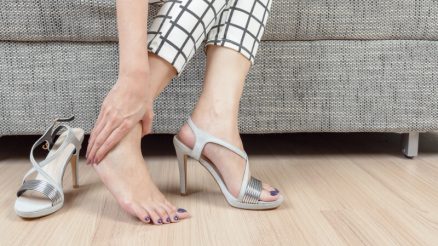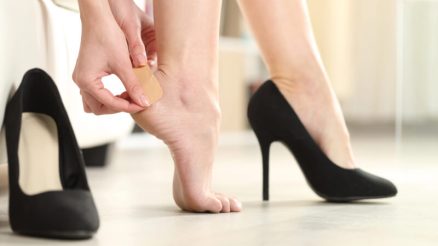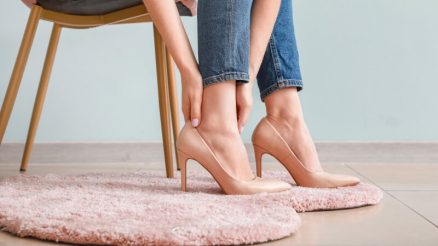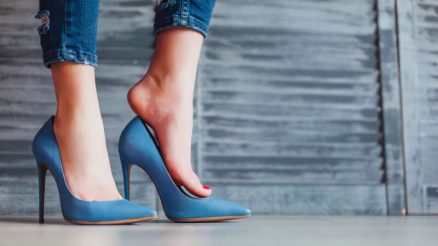High heels are more than just shoes; they’re investments in style, confidence, and sometimes, a little bit of architectural wonder. Whether they’re everyday staples or special occasion showstoppers, keeping them pristine ensures they last longer and look fantastic every time you slip them on. Improper storage can lead to scuffs, squashing, dust buildup, and even structural damage. But fear not! With a little care and the right techniques, you can keep your beloved heels looking as new as the day you bought them.
This guide will walk you through the best practices for storing your heels, from everyday solutions to long-term preservation.
Why Proper Heel Storage Matters
Before diving into the “how,” let’s understand the “why.” Heels are susceptible to various forms of damage if not stored correctly:
- Dust and Dirt: Over time, dust settles on shoes, dulling their finish and potentially embedding into delicate materials.
- Scuffs and Scratches: Heels, especially thin stilettos, are prone to getting nicked, scuffed, or scratched if left exposed or piled together.
- Creasing and Crushing: Soft leathers and delicate fabrics can crease or lose their shape if shoes are crammed or stacked without support.
- Fading: Direct sunlight can cause colors to fade, especially on vibrant or dyed leathers and fabrics.
- Odor and Mildew: Poor ventilation can trap moisture, leading to unpleasant odors or even mildew growth, particularly in humid environments.
- Structural Damage: Repeatedly bending or twisting the heel or toe box can weaken the shoe’s structure.
Essential Steps Before Storage
No matter how you choose to store your heels, a little prep work goes a long way:
- Clean Them Thoroughly:
- Wipe Down: Use a soft, damp cloth (microfiber is excellent) to wipe away surface dust and dirt.
- Spot Clean: For specific stains, use a cleaner appropriate for the material (leather cleaner, fabric cleaner, suede brush). Always test in an inconspicuous area first.
- Sole Clean: Clean the soles to prevent tracking dirt into your storage area.
- Deodorize (If Needed): Sprinkle a little baking soda inside the shoes and let them sit overnight, then shake it out. Cedar shoe inserts also work wonders for absorbing moisture and odors.
- Condition Leather: For leather heels, apply a suitable leather conditioner to keep the material supple and prevent cracking.
- Allow to Air Out: Ensure shoes are completely dry before storing them, especially if you’ve cleaned them or worn them recently in humid conditions. This prevents mildew and odors.
- Maintain Shape:
- Shoe Trees: Invest in shoe trees, particularly for leather heels. These help maintain the shoe’s original shape, prevent creasing, and absorb moisture.
- Acid-Free Tissue Paper/Stuffing: Stuff the toe box with acid-free tissue paper or crumpled paper to help retain its shape. Avoid newspaper as the ink can transfer.
Popular Storage Solutions for Heels
Now, let’s explore the various ways you can store your heels, catering to different spaces and collections.
1. Clear Shoe Boxes (Stackable)
Pros:
- Visibility: Clear boxes allow you to see exactly what’s inside without opening each one.
- Protection: Excellent protection against dust, dirt, and scuffs.
- Stackable: Maximizes vertical space in closets or shelves.
- Individual Protection: Each pair is stored separately, preventing damage from other shoes.
Cons:
- Can be bulky if you have a very large collection.
- Initial investment cost.
Tip: Look for boxes with ventilation holes to allow for air circulation.
2. Original Shoe Boxes
Pros:
- Free: You already have them!
- Protection: Good protection against dust and damage.
- Often designed with a small photo or description, making identification easier.
Cons:
- Not always uniform in size, making stacking less efficient.
- Requires opening each box to see the contents.
Tip: Label the outside of the box with a photo or written description of the shoes inside to save time.
3. Over-the-Door Shoe Organizers
Pros:
- Space-Saving: Frees up floor and shelf space, ideal for small closets.
- Visibility: Many pockets are clear, allowing you to see your shoes at a glance.
- Accessibility: Easy to grab and go.
Cons:
- Pockets can sometimes stretch or deform delicate materials if not sized correctly.
- Less protection from dust compared to enclosed boxes.
- Not ideal for very tall or chunky heels.
Tip: Use these for your most frequently worn heels that aren’t too delicate.
4. Shoe Racks and Shelves
Pros:
- Accessibility: Shoes are easily visible and accessible.
- Ventilation: Good airflow prevents odors and mildew.
- Decorative: Can be a stylish way to display your collection.
Cons:
- Dust Exposure: Shoes are exposed to dust.
- Scuff Risk: Heels can get scuffed if not placed carefully.
- Takes up floor or shelf space.
Tip: Place a mat or liner on shelves to protect the heel tips. Consider adding clear dust covers if dust is a major concern.
5. Shoe Cubbies/Dividers
Pros:
- Organization: Provides a designated spot for each pair, preventing piling.
- Protection: Each heel has its own compartment, minimizing contact damage.
- Neat Appearance: Creates a tidy and organized look.
Cons:
- Requires dedicated shelf or closet space.
- May not accommodate all heel heights or styles.
Tip: Measure your heels to ensure they fit comfortably within the cubby dimensions.
6. Boot Shapers/Stands (for High Boots with Heels)
Pros:
- Shape Retention: Essential for maintaining the shaft’s shape in heeled boots.
- Wrinkle Prevention: Prevents creasing in the ankle and calf area.
Cons:
- Takes up significant vertical space.
Tip: Use inflatable boot shapers or cedar boot trees. You can even use rolled-up magazines or pool noodles in a pinch!
7. Fabric Shoe Bags/Dust Bags
Pros:
- Breathable: Allows air circulation while protecting from dust.
- Soft Protection: Prevents scratches and scuffs, especially for delicate materials like satin or embellished shoes.
- Travel-Friendly: Great for packing heels in luggage.
Cons:
- No structural support, so shoes can still get crushed if piled.
- Requires opening each bag to identify the shoes.
Tip: Many high-end shoes come with these bags. If not, you can purchase them. Store one pair per bag.
General Tips for Long-Term Preservation
- Location, Location, Location:
- Cool, Dry Place: Store heels in a cool, dry environment away from direct sunlight, extreme temperatures, and humidity. Basements and attics are generally not ideal.
- Ventilation: Ensure good air circulation to prevent moisture buildup.
- Avoid Piling: Never just toss your heels into a pile. This is the quickest way to scuff, scratch, and damage them.
- Separate by Occasion/Material: Consider organizing your heels by frequency of use (everyday vs. special occasion) or by material (suede, leather, satin) to make retrieval easier and ensure appropriate storage methods are used.
- Heel Tip Check: Regularly inspect your heel tips. Worn-down tips can damage the heel itself and make walking difficult. Replace them promptly.
- Rotation: If you have many pairs, rotate them occasionally, even those you don’t wear often, to allow them to breathe.
Conclusion
Storing your heels correctly is a simple yet impactful way to extend their lifespan and keep them looking fabulous. By investing a little time in cleaning, shaping, and choosing the right storage solution for your collection, you can protect your stylish investments from the ravages of dust, damage, and disorganization. So go ahead, give your heels the VIP treatment they deserve – your feet (and your wallet) will thank you!








